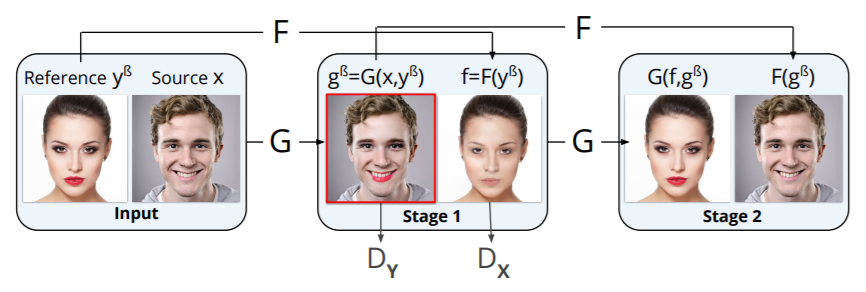Let's discuss the simplest concept to understand with GANs: style transfer. This type of methodology manifests itself in many different variations, but one of the things I find fascinating is that the architecture of the GAN needs to change based on the specific type of transfer that needs to occur. For instance, one of the papers coming out of Adobe Research Labs focuses on makeup application and removal. Can you apply the same style of makeup as seen in a photo to a photo of another person? The architecture itself is actually rather advanced to make this happen in a realistic fashion, as seen by the architecture diagram:

This particular architecture is one of the most advanced to date-there are five separate loss functions! One of the interesting things about this architecture is that it is able to simultaneously learn a makeup application and makeup removal function. Once the GAN understands how to apply the makeup, it already has a source image to remove the makeup. Along with the five loss functions, the generator is fairly unique in its construction, as given by the following diagram:

So, why does this even matter? One of the recipes we are going to cover is style transfer, and you'll see during that particular recipe that our GAN model won't be this advanced. Why is that? In constructing a realistic application of makeup, it takes additional loss functions to appropriately tune the model into fooling the discriminator. In the case of transferring a painter's style, it is easier to transfer a uniform style than multiple disparate makeup styles, like you would see in the preceding data distribution.
